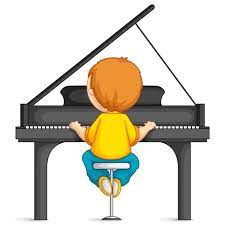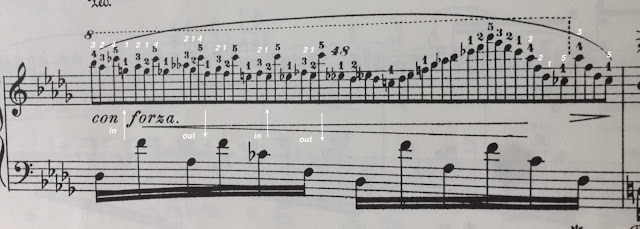 |
| Bette Davis |
Every now and then—okay often—I cite a reference with my students that dates me. I've learned, for instance, that film stars from the golden age of Hollywood are no longer in the firmament. Bette Davis (mid-twentieth century movie star) once said "If everyone likes you, you’re not doing it right.” I thought this apropos for students enduring the rigors of competitions. The most celebrated musicians that I grew up revering are at most an echo in some distant galaxy. Arthur Rubinstein was once the go-to pianist for all things Chopin. His training began, after all, in the late nineteenth century. |
| Arthur Rubinstein |
Sometimes I allude to other instrumental works or opera in order to make a point for students. When these references elicit blank stares, I begin to think there's something missing in the musical education. Hence my present occupation, which, admittedly arose out of an abundance of at-home time in recent months. I have been transcribing significant and engaging works, orchestral and piano, for piano four hands. The hope is that the joy that comes from sharing music with a partner will instill a broader appreciation of other genres and of larger piano works that may lie a bit beyond technically, in the virtuoso realm. These pieces are remarkably easier to play as duets, and in the process of playing them, one begins to unlock some of their mysteries. The Brahms "Handel Variations" is in the works. But available now is the "Variations on a Theme of Tchaikovsky" by Anton Arensky.
 |
| Huh? |
This set of variations is the celebrated string-orchestra composition by one of Russia's most romantic composers, which I've transcribed for piano four hands. Here you will find idiomatic piano figures that are both easy and somewhat challenging. The variations began life as the slow movement of Arensky's String Quartet No. 2 in A minor, Op. 35, for the unusual scoring of violin, viola, and 2 cellos. Written in 1894, the year after the death of Tchaikovsky, it is a tribute to that composer. The theme is from the song "Legend," the fifth of Tchaikovsky's sixteen Children's Songs, Op. 54. Tchaikovsky's song was inspired by a poem called "Roses and Thorns" by the American poet Richard Henry Stoddard. At the first performance of Arensky's quartet, the slow movement was so well received that Arensky soon arranged it as a separate piece for string orchestra, Op. 35a, in which form it has remained among the most popular of all Arensky's works.







